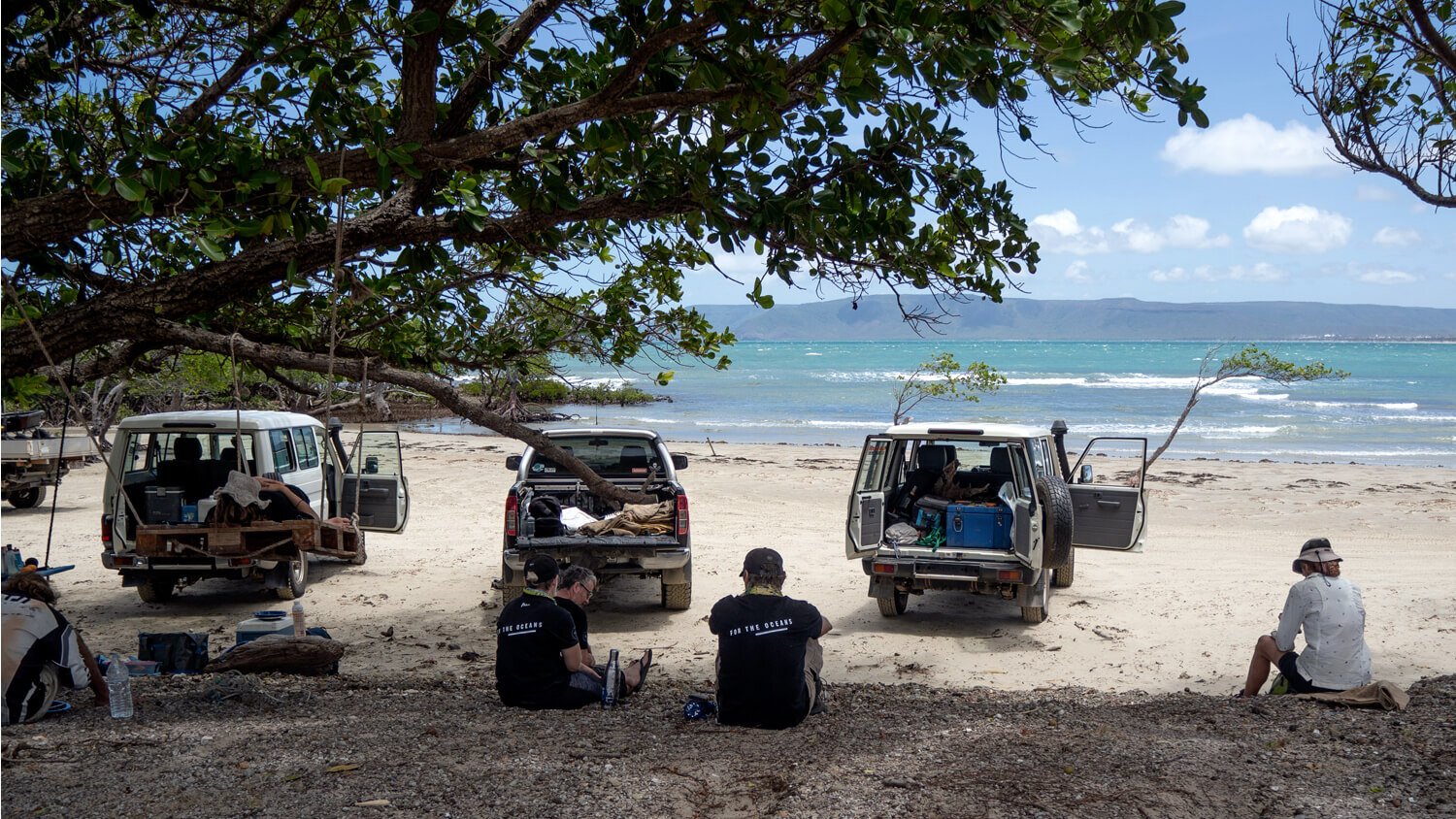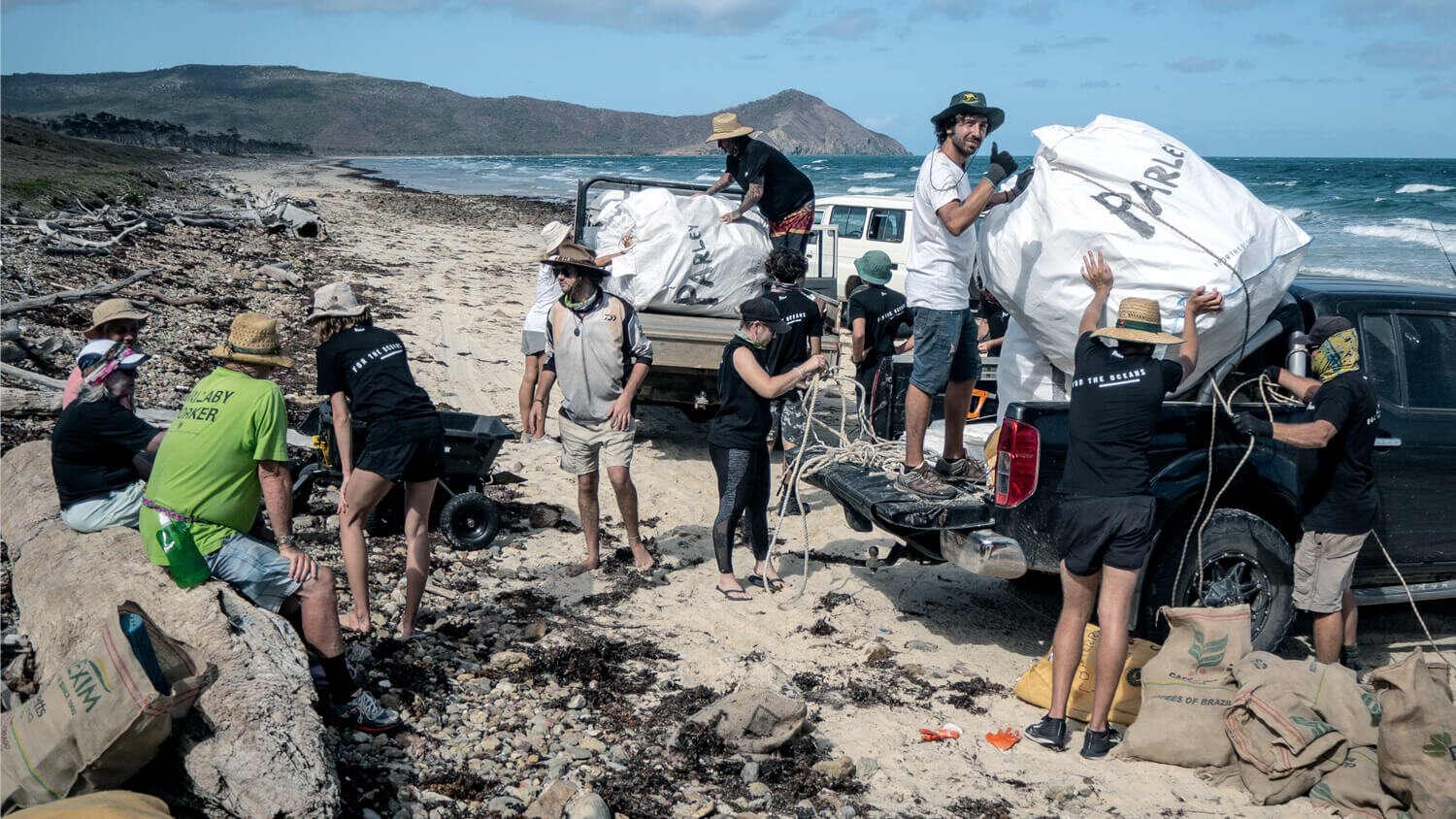Parley x American Express: Cape Bedford expedition
With the support of our partner American Express, Parley Australia recently organized three expeditions to the far reaches of Cape Bedford. Join us on a journey north as we explore the threats facing local ecosystems – and our teams.
In the far reaches of northern Australia, the vast and largely empty beaches of the Great Barrier Reef Marine Park stretch out towards the distant horizon. Along this faraway coast, Indigenous people have co-existed with the flora and fauna of the coastal ecosystem for thousands of years – but today the area is heavily affected by drifting plastic and other pollution.
With much of the country still under lockdown measures, Parley Australia has managed to continue our work in Cape Bedford – a rugged area on the northeast coast of Australia, at the southern end of Australia's iconic and extremely remote Cape York peninsula. In a series of gruelling expeditions, a small group of dedicated and experienced volunteers braved heat, snakes, poisonous spiders, saltwater crocodiles and the harsh coastal environment.
“Cape Bedford is one of the worst impacted hot spots with marine debris in Australia,” explains Parley Australia director Christian Miller. “Finding one to two tons of rubbish per mile of beach is not uncommon. The southern equatorial current that sweeps across the Pacific Ocean hits this area directly, bringing in debris from all over South East Asia and even South America. The Cape Bedford headland also traps large amounts of marine plastic floating north from Australia's east coast cities.”
Like the rest of the Cape York peninsula, Cape Bedford is sparsely populated. The region is owned and managed by the Indigenous Traditional Owners of Hopevale, and the local mountains and canyons hold deep cultural significance for these communities. Various dreamtime stories are linked to these landmarks, with ancient rock paintings found among the local cliffs. Many areas are regarded as sacred sites and hence not accessible to non-initiated people, or only accessible with a special permit.
To get to Cape Bedford, our teams first undertake a long drive north from Parley’s Australian headquarters in Cairns – traveling along unsealed, narrow and winding rainforest tracks. Once there, they have to travel up to 40 minutes to reach the coast across very rough 4WD tracks, over soft sand dunes that love to halt progress, or through deep washouts that make for treacherous driving. The stunning landscape varies between colourful sand dunes and rough and steep cliffs with barely any vegetation. There are no towns or settlements anywhere near the beaches we clean up, meaning the teams camp and need to be self-reliant.
Loading countless full and heavy silo bags and any additional large and bulky items onto the cars to drive the same steep, rough and narrow track back to the camp requires superhuman packing skills. The volunteers can then enjoy a bit of free time before they help together to cook dinner for the group and assemble around the campfire. The expeditions include some additional activities such as explorational walks and hikes to nearby landmarks, an extensive Parley educational presentation and movie night where all tourists at the campground are invited, or games and quiz nights with an educational focus on marine debris and plastic.
To date, Parley Australia has run six week-long trips to Cape Bedford in the last two years – although Parley coordinators Matt Wheldon and Angelika Volz have been running cleanup expeditions to the region since about 2014 – before Parley Australia was founded. Many beach sections that the teams are now targeting have never been cleaned before. This means that they are removing a large amount of backlog that is buried deep in the sand and has been accumulating for decades. Once the backlog is removed, they return to the same section during the following expedition to maintain the beach. In 2019, Parley removed 10.5 tonnes of rubbish from about 6 km of beach. In 2020, they removed 7.8 tonnes.
95% of all rubbish in Cape Bedford is plastic, including fishing nets, car tyres or flip flops. Broken fragments are the most common item, with some beaches littered with it like confetti. The next most common items are bottle caps, plastic bottles (drink, chemicals, cleaners, personal care), flip flops, but also anything you can possibly find in a household (toothbrushes, toys, household items, lighters...) as well as recreational and industrial fishing gear. Many items have bite marks from sharks. Another common find in the area are small bleach bottles with puncture marks which stem from an Indonesian fishing technique where the bottles are punctured and the bleach is squirted underwater between corals to stun and catch fish.
“Certain bottles and other items we can track down to illegal dumping from ships,” explains Angelika. “We have found items that floated north from Cairns but also from further away in Australia. About half of what we find comes from international sources. Some of our larger items include tyres, boat wreckage and big pieces of fishing rope and ghost nets. The retrieval and transport of larger items often requires clever problem solving skills. Large items are often buried deep in the sand, rope is then tangled around tree roots underground. Big drums are filled with sand and too heavy to lift. This requires us often to dig out items by hand, to pull items out of the sand with powerful vehicles or to cut large items open to dig out the heavy sand. The next challenge is to lift the items up with the scales for accurate weighing.”
Over the years, they team have encountered many rare and unusual findings in Cape Bedford, including active drifter buoys that had been deployed after a helicopter crash 200 km further south in search for the missing pilot. Some of the items recovered over the last two years include a marker buoy with a contact phone number that could be returned to the owner, a brand new and working GoPro camera with tourist photos that could still be viewed, and a massive pontoon.
This year the team found a well-preserved life raft that had gotten lost. We informed the local police who investigated if this was related to an emergency. It turned out that the raft had been lost from a boat 400 km further south 6 months earlier. The biggest item ever retrieved was a 15m long yacht mast from a high end racing yacht that had been buried in the sand for three years. It took everyone in the group to dig this massive mast out as it was filled with sand. We then cut it into three manageable pieces, each 5m long. The item weighed 408 kg.
“Volunteers who are new to the topic are usually blown away by how much rubbish washes up, how much we collect, what big logistics are involved and how much plastic we use as a society in the first place,” explains Angelika. “They return home (which can be on the other side of the world) with a very new understanding of the plastic issue but also of the natural environment of that area and of cultural aspects. These expeditions are an eye-opener for inexperienced volunteers and locals alike.”
A massive job
Even though Parley has been removing large amounts of debris from a six kilometer stretch of beach in Cape Bedford, we have only cleaned about 10% of coastline in the area of the Hopevale community. The east coast of the entire Cape York peninsula would easily hold 1000 kilometres of highly impacted and very hard to access beaches. Most of them would have never been cleaned before and are seen as an impossible task since access (especially from land) is so difficult. With our skills and experience, and the right logistics and equipment, this could be a possible project for the future.
Plastic isn’t the only threat
The Australian saltwater crocodile is the biggest crocodile in the world and the only one that will deliberately stalk and target humans as prey. To stay safe in crocodile country requires knowledge of their behaviour and preferred habitats. We then have to adjust our behaviour accordingly – so no swimming in the ocean! The beaches in Cape Bedford have countless treacherous lagoons that are hidden under floating volcanic pumice rocks and usually loaded with rubbish. As tempting as it is to walk on the unstable surface that could break at any time revealing a crocodile in the water under your feet, we have to carefully assess if a crocodile is present in one of those spots and have to leave piles of garbage behind if in doubt in the name of safety.
Where does the waste go?
”Collected debris that cannot get recycled will go to landfill. However, in remote regions like Cape York, the garbage at landfill sites is burned, releasing toxic gases. That’s why we do not send any of our collected debris to local landfill but rather ship everything to Cairns via in-kind support through a truck company.” – Angelika Volz
























